In mid-January, for the first time in years, snow fell in Atlanta. Huge wet flakes dropped down to the ground as soppy slush. Ten days later, Atlanta saw snow again. This second snow fell light and fluffy. Small, delicate flakes descended gently to earth, landing as a layer of cottony crystal coating the branches of trees and the dry, dormant remains of fall’s flowers.
Clouds cloaked the sun, leaving the day dim. Birds bustled on the ground, searching for seeds. Shadow masked the details of blackbirds, kinglets, and wrens. Their dark forms darted among leaves not yet buried by snow. A few lights broke through that shadow — the lemon sunshine of a pine warbler; the red of a cardinal, bright enough to illuminate his otherwise inconspicuous mate; and the diamond white at the throat of the white-throated sparrow. These sparrows, with pale gray bellies and backs striped with brown, would have blended in with the leaf litter, but for their throats, as bright as the snow itself.
Overnight, the snow froze, sheets of ice like smooth glass coating the sidewalks and streets on the morning of the second day. Tracks in the snow told stories of the passing of birds, squirrels, and cats. In the early morning, shadow pooled within the prints, painting them blue.
No clouds covered the sky. Nothing restrained the sun, once it rose. Its light sparkled on the snow, dust-sized gems that winked and blinked on the ground. Its warmth fell freely on the trees, and the branches shed their snowy raiment.
I heard the song before I saw the birds that sang. From above came soft sounds, like a mix of whisper, buzz, whistle, and squeak — sounds made quickly, briefly, and in quantity — each bird rapidly emitting a flurry of these short, soft sounds, in chorus with every other bird in the flock. If the song of a robin is a ribbon that curves and dances in the air, the song of a cedar waxwing is a rapid succession of tiny stitches sewn with a thin, strong thread. Together, the flock constructs a silky swath of sound.
I looked up at the cedar waxwings flitting and weaving through the branches of a Bradford pear tree. I stood transfixed, as though tangled in the gauzy fabric of their song. Among the jewels of winter, cedar waxwings embody elegance. The sweeping curves of their form, their black mask — like a flourish of ink from base of bill, over eye, and across cheek, in an arc that mirrors the crest that crowns their heads — together, these cause the cedar waxwing to resemble the visual, tangible representation of a dance, even when the birds are still. Yet they are rarely still; they dip and dive over and under tangled tree branches with the grace of dancers, as they sing their subtle, quiet song.
Their plumage pale, rose-beige head and neck gradually becoming soft gray back and wings, they could almost blend in with sparrows, wrens, and other winter birds of muted, neutral tones. Yet they bring bright color to the winter shadows; small red spots, vivid as a cardinal, dot each gray wing, and yellow tips their tail feathers, a scalloped border of sunshine reminiscent of the golden leaves of a hickory in the fall.
On the third day, I visited Murphey Candler Park. Snow had mostly melted, but ice covered Murphey Candler Lake, reflecting the clouds, sky, and dark trees at the lake’s edge. The ice froze in feathery ripples, as though the water had captured the wind in mid-flight, imprinting its image onto the ice.
Towards a shore where the ice had melted, hooded mergansers (another jewel of winter) floated.
Where Nancy Creek branches under the boardwalk and travels north of the lake, a flock of cedar waxwings feasted on privet berries. Below, sparrows crowded the muddy shore.
As I completed the lake loop and approached my car, another surprise greeted me — not one, but two brown creepers — one on an oak and one on a pine, on either side of the trail. Because they blend in so well with the trees upon which they creep, I rarely see brown creepers; I had, until that point, seen only four in my life. Finding #5 and #6 together felt like a birding blessing.
Brown creepers may be the antithesis of cedar waxwings in appearance and movement. Brown creepers are brown striped with more brown. They are shaped like a lump with a hooked bill. They move vertically up and down trees, dashing, creeping, and scooting. Cedar waxwings, in contrast, sport a dramatic mask and as they dance through the air. Both species are difficult to photograph, and in the case of the brown creeper, difficult to see at all. Their rapid movements, often in shadow, elude the camera’s focus. A sight of either is therefore a pleasant surprise. They are among the treasures of cold season birding — a gift of the winter.
I previously wrote about Murphey Candler Park in the below post, which now includes voiceover.




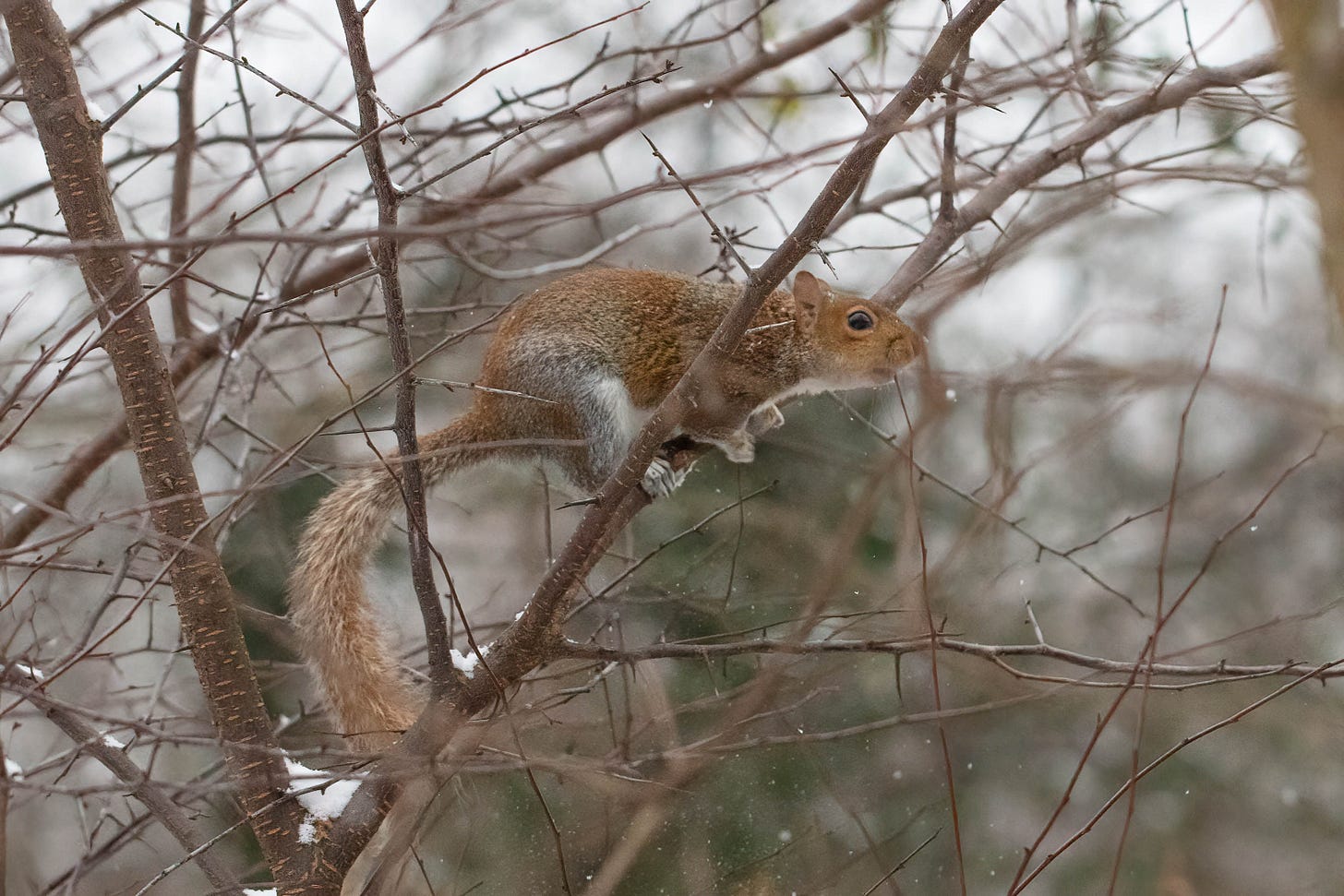


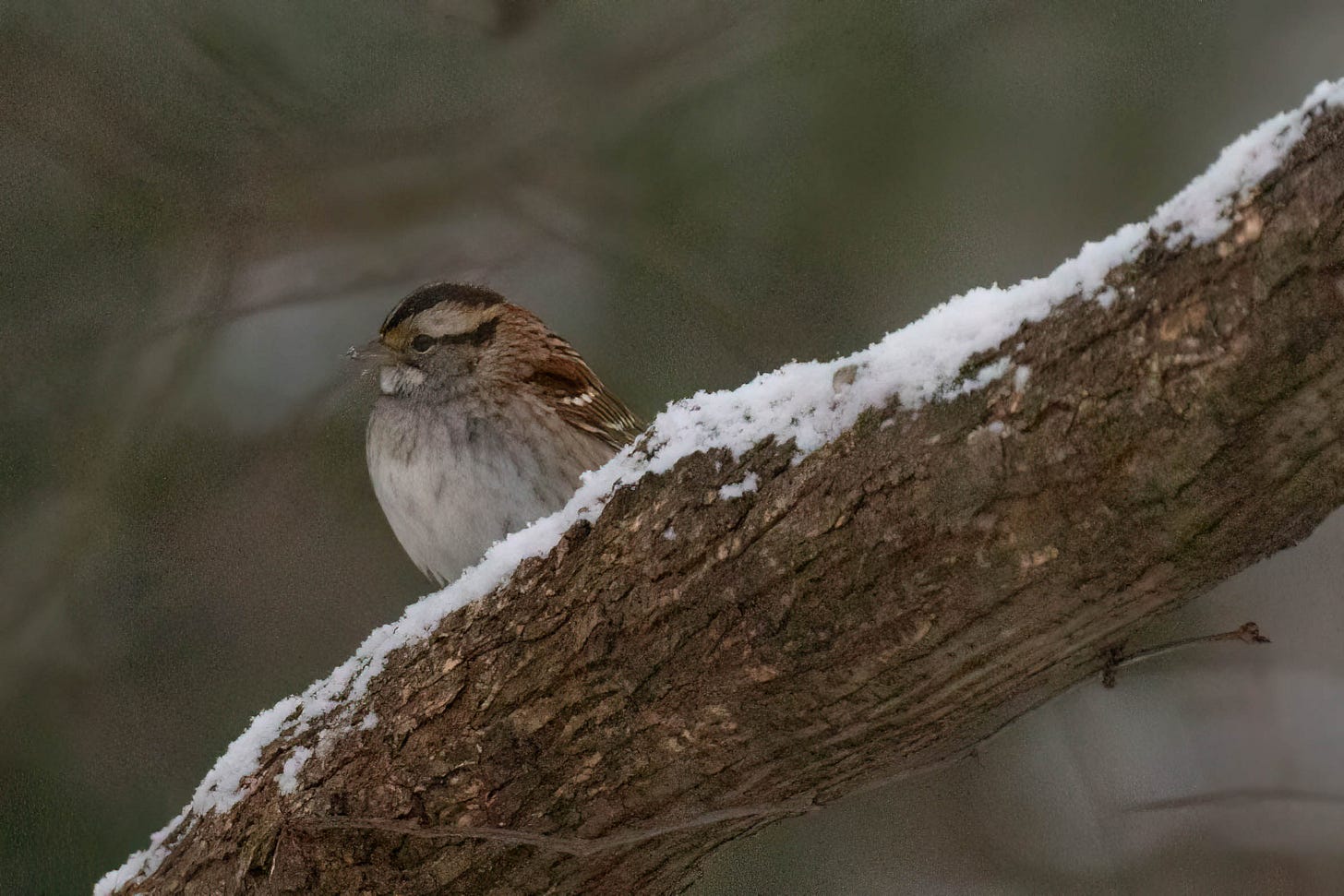
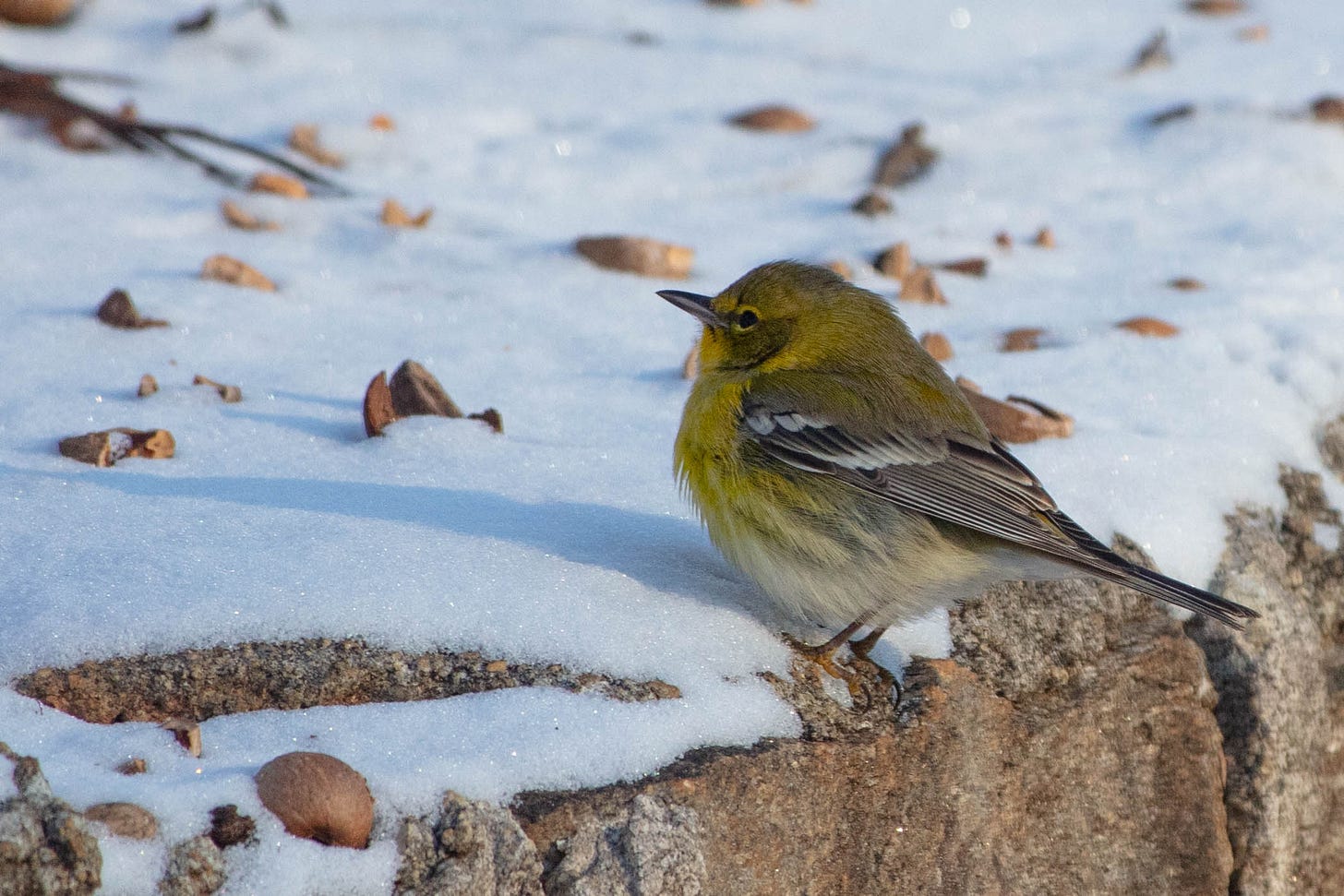
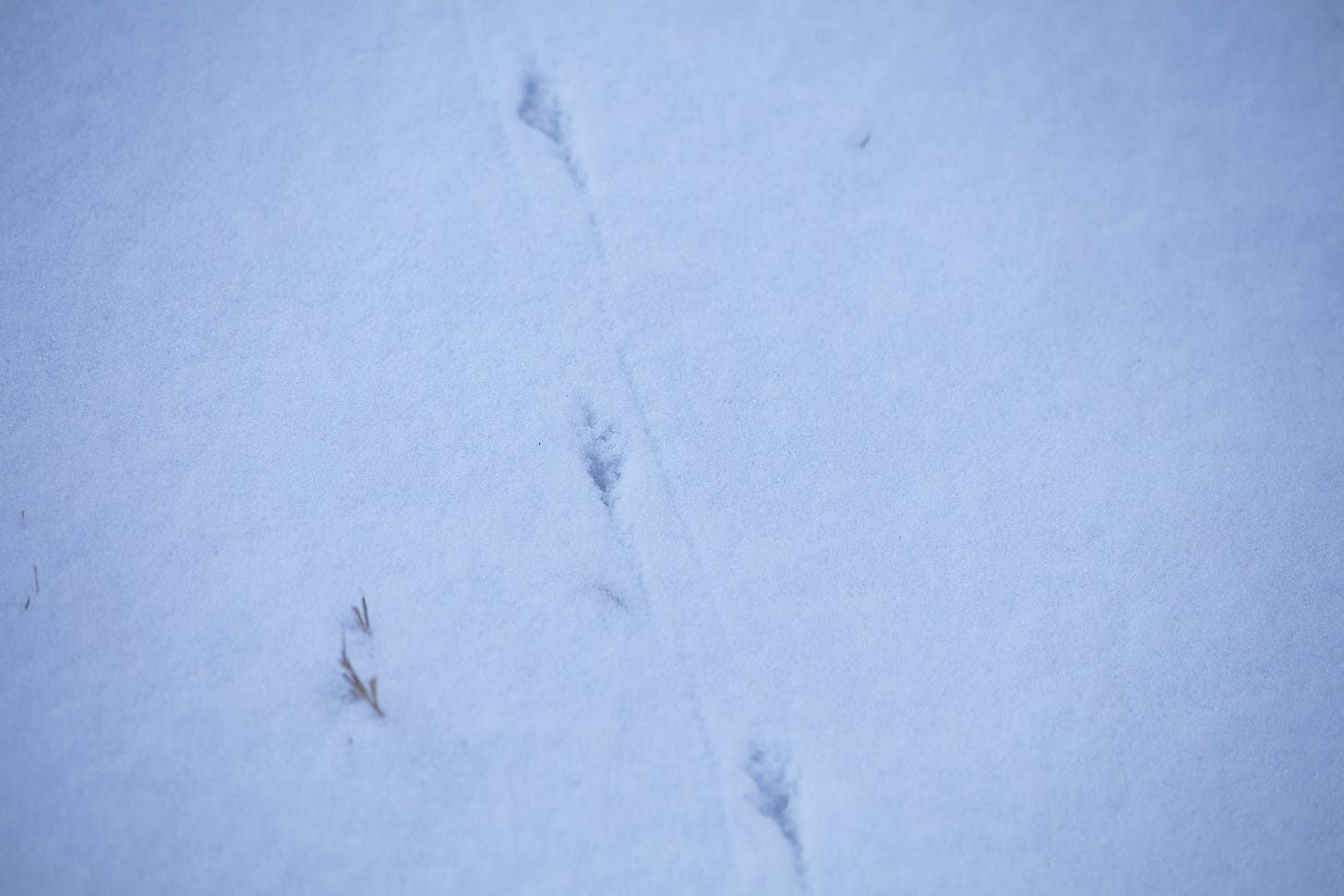
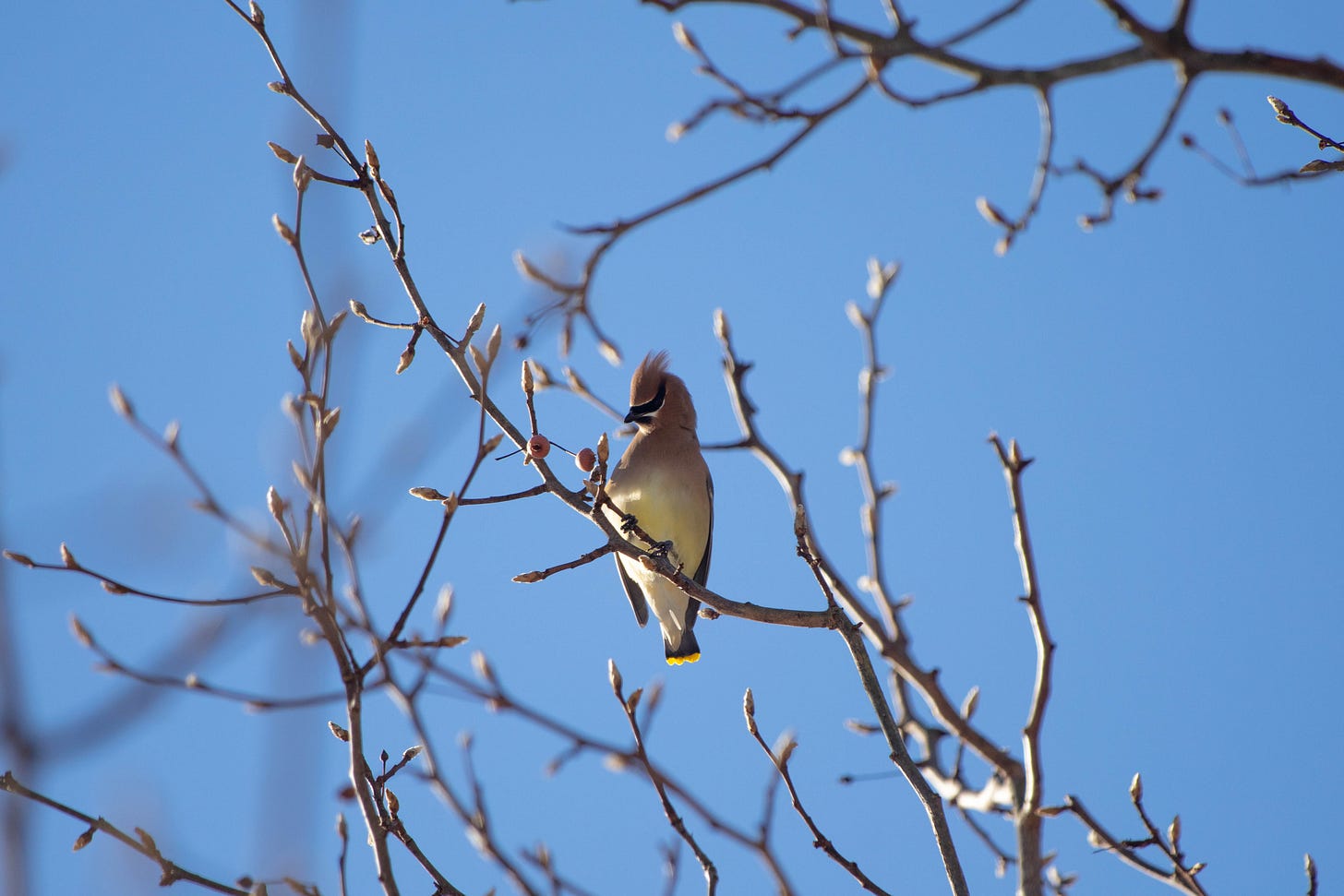


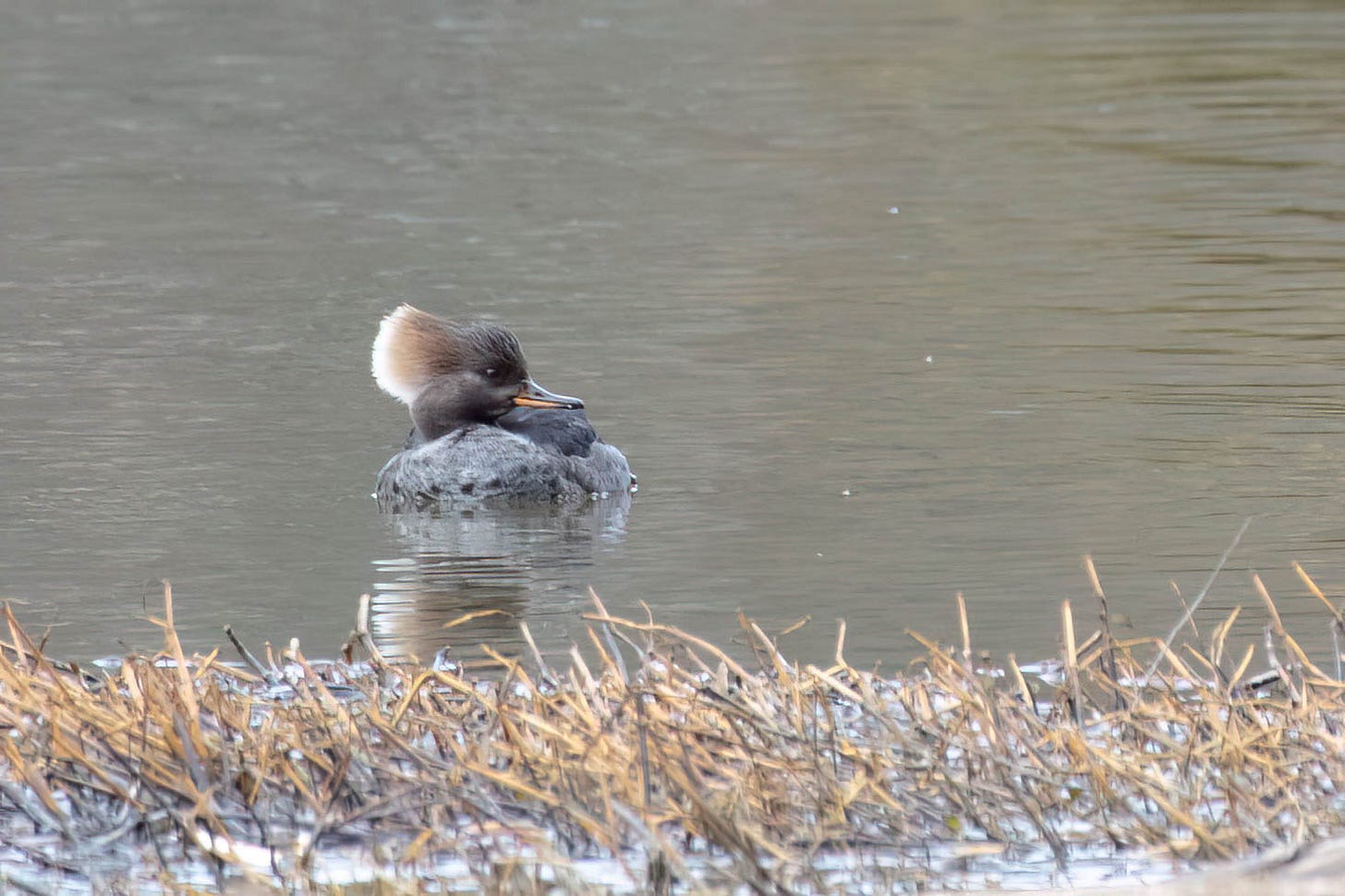


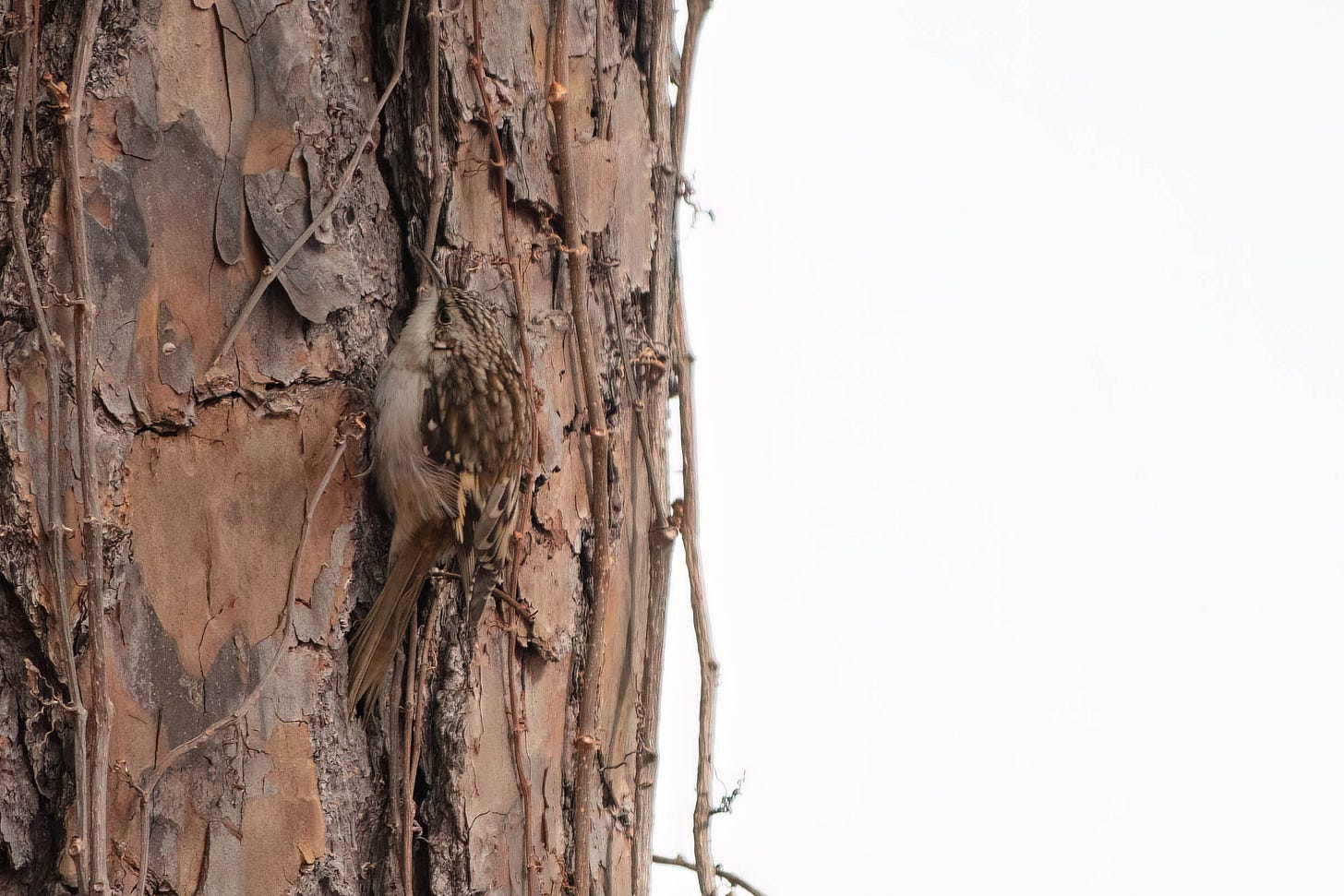

Your writing is so elegant and poetic. And that "silky swath of sound" when the cedar waxwings flew in... I can hear it! Beautiful photos too.
Beautiful photos!